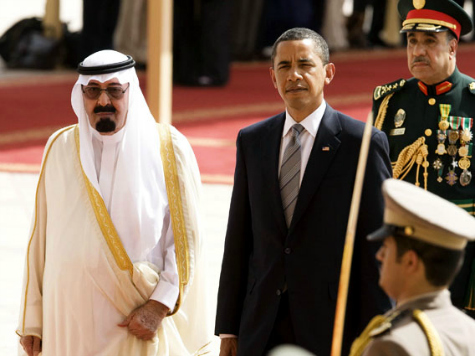The recent drop in gasoline prices down to a national average of $3 a gallon puzzles in the wake of years of rising costs for consumers.
In the midst of another election cycle, the Saudis once again appear to be orchestrating geopolitical outcomes. OPEC’s oil output reaches close to a two-year high.
As gasoline prices have made headlines, several narratives reappear. Generally the explanations revolve around two basic truths: 1). increased North American oil production and, 2), sluggish economic growth in Europe and Asia resulting in a surplus of oil.
U.S. oil output now stands at a 28-year high–up 80 percent since 2008. Thanks to the combined technologies of hydraulic fracturing and horizontal drilling, experts predict the U.S. will become the world’s top producer by 2015. CNN Money reports: “The U.S. isn’t addicted to foreign oil anymore. The shale gas boom in the U.S. is a game changer for oil prices.”
The U.S. has changed global oil markets, but so has ISIS. Several months ago, when ISIS first emerged as a threat to Iraq’s oil production, oil prices experienced a spike. However, when Iraqis and Kurds thwarted its southern movement and it did not take over Basra’s oil fields, prices eased.
ISIS has become a real player in the global oil markets. The territory controlled by ISIS has a pre-war capacity of 350,000 barrels per day (bpd). Estimates vary, but it is widely believed that ISIS produces 50-80,000 bpd–most of which it sells on the black market at prices assumed to be $25-60 per barrel. The terror group’s most frequently cited oil-revenue figure is $2 million a day.
ISIS doesn’t abide by any international agreements or price regulations. This is a “black market.” There are no tangible income or production numbers. We don’t definitively know all of ISIS’s customers.
The region’s long-established smuggling routes make it easy for the oil to be trafficked out of the territory where someone buys it.
Some of ISIS’s heavily-discounted oil reportedly ends up in Pakistan. Legitimate traders won’t deal in it, so it likely goes to nations that care little about the rule of law. The outlets soaking up the discounted oil are not buying the full-price oil, which leaves millions of dollars–50-80,000 barrels a day of full-price oil on the table looking for a buyer.
So, U.S. oil and ISIS oil continue to put a lot of supply into the market, keeping the price low. Unless coalition forces successfully bomb the oil fields in ISIS control, the black-market supply will grow. If Republicans, who support developing our resources, take control of the U.S. Senate, our production could well increase. Both will help keep supply high, and prices low.
Saudi Arabia fits as the last piece in the low-priced oil puzzle.
The Saudi kingdom reportedly needs oil at $83.60 a barrel to balance its national budget. Yet, in September, with prices already down due to a global oil glut, the Saudis boosted production. Then, in October, they lowered prices by increasing the discount offered to Asian customers.
Saudi Arabia’s government is 85 percent dependent on its oil revenues and, therefore, needs to protect its turf as the dominant force in oil.
Most experts agree that keeping prices low hurts higher-cost production such as that from U.S. shale oil and Canadian tar sands, while higher prices encourage more discovery and development. A report from Reuters claims: “OPEC leader Saudi Arabia hopes to claw share from U.S. producers.”
Two years ago, Saudi Arabia did much the same thing–increasing production and dropping oil/gasoline prices. At that time, the U.S. faced an important presidential election where one candidate loudly supported America’s new energy abundance and the other touted an energy agenda all about “green.” Had gasoline still been in the range of $4 a gallon on November 6, 2012, the party in power could have faced harsh consequences. The Saudis came in, and with their unique ability to throttle production up or down, took some heat off of the Obama Administration.
It seems clear that OPEC does not want U.S. production to increase, and Saudi Arabia is in a position to try influence American politics. Lower prices favor the party in power. A shift in control of the Senate would mean a change in America’s energy policy–one that favors our homegrown energy resources, one that Saudi Arabia doesn’t want.
Regardless of possible Saudi meddling, the Senate leadership appears ready to shift. Once American voters make that decision, the OPEC leader will no longer have the incentive to inflict short-term pain on its own economic climate for long-term gain. Saudi Arabia will likely dial back production and the intentionally low price will stabilize–but not so much that it hurts the American economy.
The author of Energy Freedom, Marita Noon serves as the executive director for Energy Makes America Great Inc. and the companion educational organization, the Citizens’ Alliance for Responsible Energy (CARE). She hosts a weekly radio program: America’s Voice for Energy–which expands on the content of her weekly column.

COMMENTS
Please let us know if you're having issues with commenting.